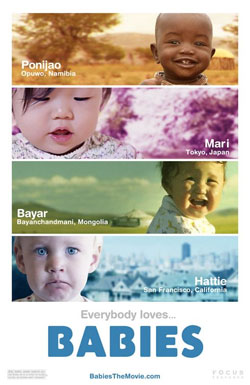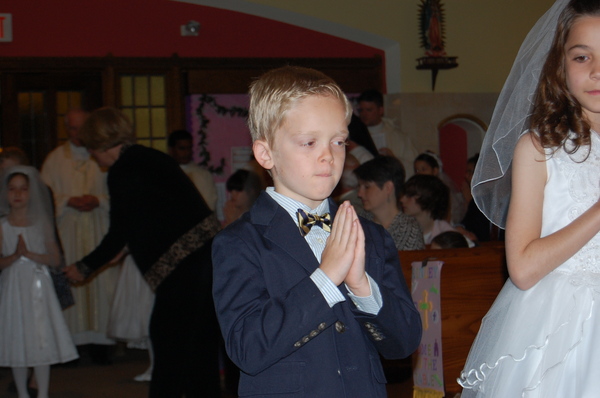 Cute, sweet, joyful, funny, and intelligent babies are at the center of “Babies” the movie. Directed by Thomas Balmes, this 80-minute documentary follows four different babies simultaneously around the world. There is no dialogue; just beautiful scenes paired with upbeat music.
Cute, sweet, joyful, funny, and intelligent babies are at the center of “Babies” the movie. Directed by Thomas Balmes, this 80-minute documentary follows four different babies simultaneously around the world. There is no dialogue; just beautiful scenes paired with upbeat music.
The film’s adorable stars are Ponijao who lives in a traditional village in Opuwo, Namibia; Mari who lives in the modern city of Tokyo, Japan; Bayarjargal (also known as Bayar and the only boy) who lives in the great wild of Bayanchandmani, Mongolia; Hattie who lives in the eco-conscious city of San Francisco, California.
All four babies are shown as newborns (no birth scenes, except for a brief shot in a Mongolian hospital) until the age of one, with all their growing pains, miraculous milestones, and curious explorations captured on film.
The film shifts back-and-forth between each baby and the beginning may seem a bit rushed as each baby is hurriedly introduced in his or her environments, but the film finds its footing once it settles on longer scenes. There are clever montages of each baby experiencing the same things in different ways. Certain scenes showcase how each baby interacts with animals: Ponijao interacts curiously with a dog by pulling at its fur; Bayar watches quietly as a rooster hops onto his bed and struts around, and Hattie sits as still and silent as the cat next to her.
There are also beautiful landscape shots Mongolia, where the sky is endless above green hills, and intimate looks at the village of Opuwo where, due to the lack of water, everyone uses an ointment made of red clay and oil. There are scenes on the streets of Tokyo, which looks like any cosmopolitan city with its skyscrapers and neon signs. San Francisco has the laid-back feel of a city on a hill.
“Babies” aims to show that even while each baby is growing up separately in very different parts of the world, they all share the basic, universal human experiences. Each baby explores his or her surroundings, eats new foods, takes baths (whether it’s in a shower or in a baby tub), tries to form words, and learns to stand upright and take first steps.
No matter the age, gender, or cultural background, everyone will love “Babies”–there is laughter, wonder, and amazement to be found in each scene. One can’t help but laugh as Mari gets frustrated playing with a new toy or smile as Hattie eats a banana for the first time or be amazed when a herd of cows bypass Bayar without hurting him.
The title “Babies” is as simple and effective as the movie itself–it’s not a complicated movie; it’s meant to revel in the radiant innocence and fun nature of babies. You won’t be able to leave the theater without feelings of warmth, happiness, and delight.
